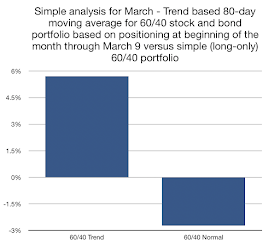The Milliman 100 pension funding index provides insight on the current state of funding, and it is not good. The index has been in deficit since the Financial Crisis and the percentage funded is at only 82.2% as of the end of February. During the last two recessions, the index was showing a surplus, so pensions were less prepared for this shock. There is little doubt that the funding deficit may show the largest monthly decline in the series and push the percentage funded to below 75%. Discount rates will continue to fall and the ability to get back to balance is unlikely even under rosy scenarios.
Similar increases in risk can be seen in the NISA Investment Advisors PSRX index. We will note that the funding deficit for their index fell by 25% between August and the end of the year 2008.
The only way these gaps can be closed without digging into revenue (cash flows) is through improving the rate of return for the portfolio going forward. Unfortunately, the combination of a low yield and high volatility environment makes for thinking through the same asset allocation framework challenging.
While it is still not employed by all pensions using an approach that thinks beyond traditional asset classes may offer promise. Thinking within a risk premia framework that include style premia may be offer return advantage by using a different weighing scheme. There is no perfect solution, but a change in regime also requires a change in investment thinking.






































